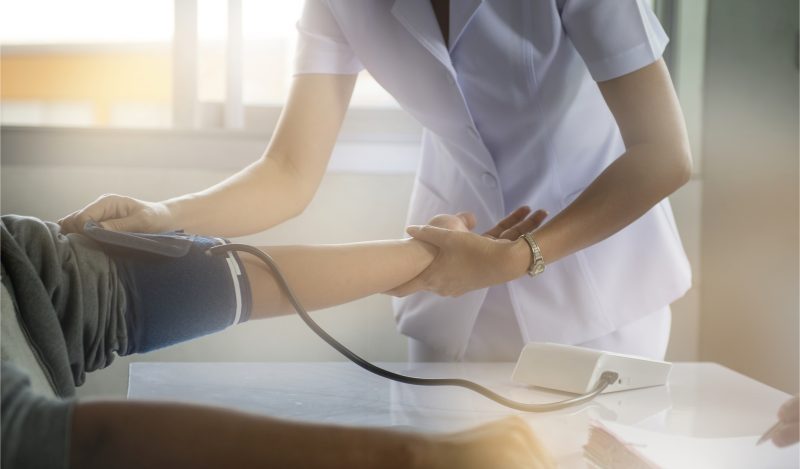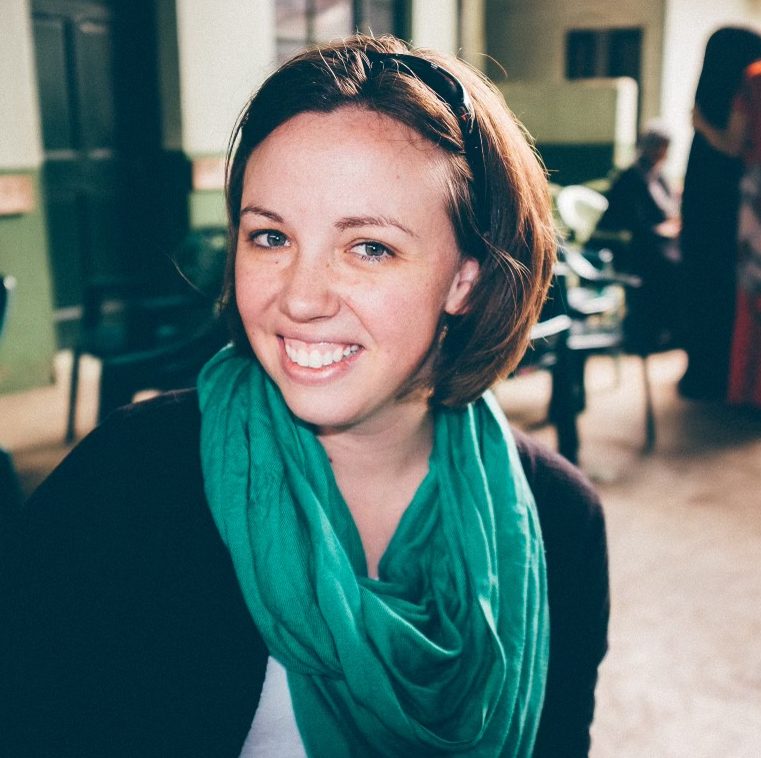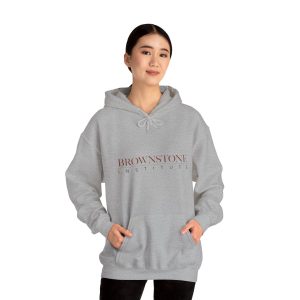I’ve always loved the holidays, but last year was bittersweet. As 2021 came to a close, I walked away from a comfortable career where I once did good in the world. Unsure of how we would make ends meet and wondering if I’d just made a huge mistake, I knew only that I couldn’t continue working in Public Health.
Since graduating from nursing school in 2008, I’d dreamed of being in this field. I thought of Public Health as a noble mission that made peoples’ lives better, improving the overall health of individuals, families, and communities. I was drawn to this broad, holistic approach. After a decade of working overseas, I found a position with a Minnesota public health agency focused on maternal and child health. For the first couple years, it was almost exactly as I’d hoped. But when the pandemic hit, I saw a totally myopic focus on one respiratory illness and a near complete disregard for any other aspect of health.
For the first time in my career, I was told to ignore suffering and forget best practices. Every day, I felt like a fraud.
My first two years on the job were not without their frustrations, but I loved what I did. As a family health nurse, I visited new mothers and infants that our agency had deemed at risk. I was proud of the relationships I formed and humbled when parents allowed me into their homes. I saw people who lived on a knife’s edge economically, socially, and psychologically. They trusted me with some of their deepest fears.“Is my baby ok? Am I a good enough parent? How will we get by?” I was in awe of my clients who stood in the face of poverty, loneliness, uncertainty, and fear but worked hard and sacrificed everything for their infants. Whether I was helping a new mother to breastfeed, find English classes, muster the courage to call a therapist, or access a food pantry, I felt grateful to be doing this work.
In March 2020, as rumblings of the pandemic picked up, I overheard the nurses commenting that the public schools were closing indefinitely. I thought about the families on my caseload that had kids in school. How would they manage without special education services, how would they manage with work? Many parents didn’t speak much English; did they know what was going on and how to find help? What about kids on free/reduced price meals? “But we know that this virus is not deadly for kids,” I said to one of them. “I know, but they can spread it to the teachers,” one nurse responded. My heart sank and I got a pit in my belly that has been there ever since.
The epidemiologist on staff explained the concept of “flattening the curve” by drawing a graph in blue marker on a white board in the conference room. I suspect it’s still there to this day. Who would see it? Everyone was sent home.
We were told not to come into the office except to pick up any needed supplies and to stay 6 feet away from others when we did. We were to schedule ‘phone visits’ with our clients and check in on them virtually. I spent my final day of in-person work furiously searching for essentials to give my families who couldn’t afford “stocking up.”
From the abrupt halt of home visiting and the laughable direction that we counsel new mothers and assess infants online to vaccine mandates that bred mistrust and fear, I watched my vulnerable families founder and fail. Throughout 2020 and then in late 2021, I voiced my concerns to leadership about the loss of trust in public health. “Harm will happen,” I was told. “Public Health addresses the immediate physical danger first, then deals with the repercussions.”
I watched for 18 months as our new ‘public health’ policies exacerbated inequality, drug abuse, child endangerment, and mental illness. My director responded by accepting more grant money to address these very issues. I was implementing policies that negatively affected the poor and racial minorities while our agency was declaring racism a public health crisis and receiving dollars to fight it. I was helping to trap people in isolation and despair while a coworker wrote about the impending mental health crisis and won a grant from the American Rescue Plan.
I was watching our agency coerce people to take vaccines, which severely decreases trust, and then use federal grant funds to address vaccine hesitancy. While the families I saw were losing their livelihoods, my director was posing for pictures with the governor who enforced the closure of their workplaces. Tolkien’s character Galadriel reminds us, “The hearts of men are easily corrupted.”
One family that I had been working with for over a year was already on the edge of isolation and poverty. The mother stayed home with the four kids, including two young babies, while the dad worked a minimum wage job. They had recently become US citizens and were taking a shot at the American Dream. Their two elementary school-aged children were now home, and mom had to find a way to feed them breakfast and lunch. She did not read English and did not understand she could still access school meals. The school district required families to be physically present at the school and provide proof that they were residents of the district — each day — in order to take home meals. For a woman with 4 small children and no access to a vehicle, this was impossible.
I emailed the school to ask if I could vouch for the family and deliver the meals for the kids. I was denied. The family went without until the father was completely without work and now had the time to go and pick up the meals.
Many of the families I served were undocumented immigrants and unable to file for unemployment or rent assistance. Most lost their income overnight. Head Start closed, forcing low-income parents to leave children with unlicensed childcare providers so that they could attempt to find a new job in an “essential” industry.
One mom told me her 18-month-old would cry when she left him with an old lady in an apartment full of kids. He seemed ‘different’ ever since she started leaving him there, but didn’t feel she had any other choice. As these children were placed in potentially unsafe situations, many in the laptop class would remark to me that they enjoyed the cost savings of not having to put their kids in full time daycare.
It was no surprise to me when the American Academy of Pediatrics declared a national emergency of pediatric mental health in October 2021. Many who work closely with children felt as though we were screaming into the void that this would happen and were just met with the response “children are resilient.” People had confused resilient with adaptable. Children will adapt to any environment they are placed in, including toxic ones. This does not mean they are innately resilient; the problems often manifest in adulthood, particularly when they come to have their own children. The current sharp decline in the mental health of children is only the tip of the iceberg of what is to come.
One family I worked with had 5 children, 4 of whom had special needs. Their mother was single and relied on special-ed services at the school. When the schools closed, she became a prisoner in her own home. She was unable to leave because she could not handle that many children in public by herself. Her mother used to help, but was at high risk for Covid complications and stayed away for many months. She told me that to use her WIC and EBT she would park in front of grocery stores and beg the workers to take her card and use her PIN in order to pay for her groceries.
Summer came and she was unable to take her kids outside because the one who was nonverbal would run through the neighborhood. I called her every week for nearly a year and I would hear the desperation in her voice. She would yell at the kids in the background and tell me she felt like she was going crazy; her children had been without therapies for months. She tried to get online counseling for herself, but it was hard to find the space in her home for privacy.
Another mother had struggled with suicidal ideation and major depression for years. She had a difficult time making it to her counseling appointments. At one point when I called her, she told me she had been in the bathroom the week prior with a bottle of pills. Thinking about her children caused her to put it down. I thanked her for her courage and we came up with a plan and made an appointment with her psychiatrist. Then I hung up the phone and cried. When I caught up with her a few months later, she told me that she had turned to drugs to cope. With 3 young kids, one of whom would later be diagnosed with autism, she was overwhelmed when their Head Start program closed.
Families were terrified of catching Covid and some skipped appointments for themselves or their children because they perceived clinics as dangerous. I discovered later that one family was refusing to allow their boys, ages 6 and 8, outside to play because of the fear of catching Covid from the air. They stayed in the small, cluttered apartment for many weeks watching TV and playing video games. When I saw them in summer, they had gained significant amounts of weight. One mother described symptoms of mastitis and I pleaded with her to go to urgent care but she refused because she was too afraid of Covid. Another young mother would not take her child to get his 18-month vaccines because of a fear of contracting Covid. I tried to explain that pertussis is far more dangerous to her child, but the fear had taken root.
I had always understood that the role of Public Health was to give accurate information to the public and support them in making healthy choices. We were supposed to use facts and data to dispel fear. But now, Public Health began to routinely distort and exaggerate data to fit their narrative. Emails between the Minnesota Health Department and Governor Walz’s staff appear to do just this. The communications director at our own local agency asked us to find a young healthy person who had ended up hospitalized in order to illustrate the dangers of Covid to young people. Since the actual dangers to young healthy people were quite rare, we never found anyone in our community to fit her profile. But someone else did.
How could I convey to the mother with mastitis that the urgent care was safe if I, myself wasn’t permitted into her home for breastfeeding support because it was “too risky?” If I was not permitted to go into a home in order to weigh and assess a newborn baby, why should a mother not be concerned about taking him to the clinic for his vaccines? It felt completely disingenuous and I started to experience deep moral distress.
Every time I asked what the goal was to return to visiting families in their homes, I was given the same answer: “Let me check into it.” Who had decided to stop in-person nursing services? I couldn’t always tell because no one seemed to want to take that responsibility. The State Health department had told us to do what we were comfortable with as an agency. Sometimes I was told it was the safety and compliance officer, sometimes it was the director of public health.
Many of the nurses themselves did not want to return in person — which I understood. For the first time in my career, I didn’t have to worry about childcare, rush hour, or getting up in time to take a shower before work. I didn’t have to sit in a cramped, hot, smelly apartment with someone’s boogery child crawling all over me. I was pregnant with my fourth child and far more comfortable staying home. But that convenience didn’t make up for the guilt I felt.
The families that were part of our program made it possible for people like me to stay home. They went to work in grocery stores, restaurants, packing school lunches, construction, and working as nursing assistants in long-term care.
Then the vaccines came. Many had already recovered from Covid and found it to be mild, myself included. They were wary of the vaccine or felt they didn’t need it because they had already had the illness. But Public Health insisted through a variety of coercive means, that in order for us to feel safe around these people, they must get vaccinated.
A few days after my baby was born, our agency received its first shipment of the long awaited mRNA vaccines. We were short-staffed, so I called my manager and let her know that I would be willing to return 1-2 days per week to give vaccines. I was determined to do my part in ending the pandemic in order to get back to normal for the families on my caseload (not to mention my own family). I recall telling people that they were 95% protected from ever getting Covid at all. It was a hopeful and exciting time that was extremely short-lived.
Within months, we had people asking us just to give them a filled out vaccine card so that they could enter lotteries and earn incentives from Krispy Kreme. One of our nurses had someone tell her he would give her his stimulus check if she would just fill out the card. Of course, we declined these requests and bribes. By April, we were told by the state health department that we could start opening a 10-dose vial for 1 person and waste the other 9 doses, something that was unconscionable just weeks prior.
Then things started to turn even more sinister.
One afternoon, a young man sat down at my vaccine station in an angry manner. I asked what was going on, he said, “I’m only here because my work is telling me I have to get this to keep my job.” I set down my alcohol swab and removed my gloves saying “I’m sorry sir, but I can’t give you this vaccine if you are being coerced.” (At that time, I understood this to be the policy of public health.) He looked surprised. I told him that he appeared capable of making his own medical decisions and I could not take part in coercion. He and I chatted for a while about his personal risk factors for Covid, the known potential side effects of the vaccine, etc. In the end, he decided that he did want it after all, so I put my gloves back on and gave it to him. But the incident haunted me.
After that, I tried to avoid working at Covid vaccine clinics. But there was one that I ended up working at in September at a local community college. While sitting there with nearly no one showing up, I recounted this story to the nurse I was with to see what she thought about it. “We are at the point where people need to be forced,” was her reply. My heart sank. I never wanted to be part of forcing medical treatments on anyone.
Tears streamed down my cheeks as I turned in my resignation letter in November 2021. It had been an honor to be invited to do the work that I did, but I felt that I no longer belonged nor was welcome in my workplace. As I cleared out my desk, I came across infographics on the importance of babies seeing faces, the dangers of too much screen time, and notes from trainings that described the detrimental effects of social isolation. These were relics of a time when the well-being of children was the singular focus of my work, but that era in public health seemed to have passed.
Published under a Creative Commons Attribution 4.0 International License
For reprints, please set the canonical link back to the original Brownstone Institute Article and Author.









